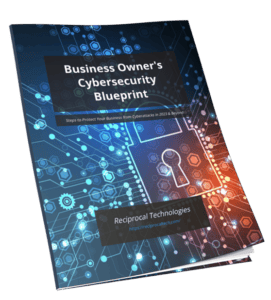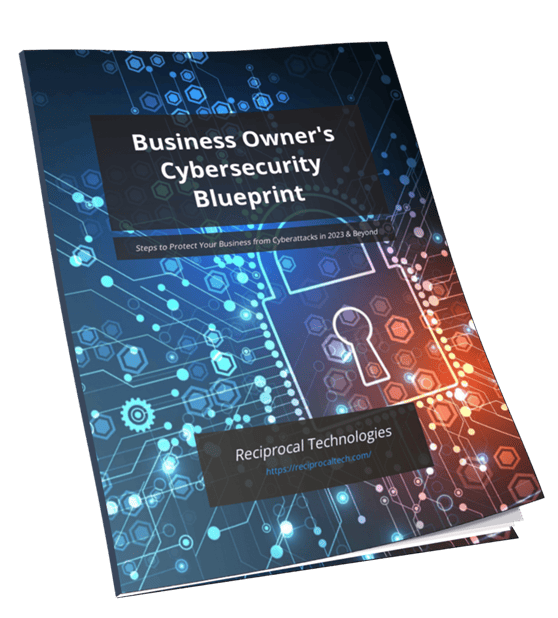The Windows 10 Deadline: A Strategic Guide for Your Business

In business, we plan around deadlines every day. But there is a major one on the horizon that many companies have not yet fully addressed. On October 14, 2025, Microsoft will officially end support for its Windows 10 operating system. This is not a soft deadline or a minor update. It’s a hard stop that will have significant consequences for any business that is not prepared.
It’s easy to view this as a purely technical issue, something for the IT department to handle down the road. But this perspective overlooks the profound business implications. This transition directly impacts your company’s security, your budget, and your team’s productivity.
Ignoring this deadline is like ignoring an expiring lease on your office building. You know the date is coming, and continuing to operate as if nothing is changing is not a viable strategy. The good news is that with a proactive approach, this mandatory event can be transformed from a potential crisis into a valuable opportunity to modernize your operations and strengthen your business.
The Real Risk of Standing Still
Let’s be perfectly clear about what “end of support” actually means. After October 2025, Microsoft will no longer release security updates for Windows 10. When cybercriminals discover new vulnerabilities in the system, and they certainly will, there will be no patches to fix them.
Your business computers will have a permanent, unfixable open door. This makes any organization still running Windows 10 an incredibly attractive target for ransomware attacks and data breaches. For businesses in regulated industries like healthcare or finance, operating on an unsupported system can also be a direct compliance violation, leading to significant fines. The security risk alone makes inaction an unacceptable gamble.
Beyond the immediate security threat, there are hidden but significant financial costs to delaying. Older systems are less reliable and can lead to more frequent downtime and lost employee productivity. Over time, the essential third party software you use for accounting or customer management will also cease to support Windows 10, leaving you stuck with outdated and inefficient tools.
Building a Smart, Budget Conscious Plan
Once we accept that an upgrade is necessary, the conversation naturally turns to cost. Many leaders hear that Windows 11 is a “free upgrade” and assume the project has no budget impact. This is a common misconception.
While the software license is indeed free for a compatible computer, the true costs of the project are in the labor required to manage the migration and, more significantly, in the hardware that will need to be replaced. If a computer does not meet the minimum system requirements for Windows 11, it cannot be upgraded. Typically, this means any machine that is more than five or six years old will need to be replaced.
This is where a strategic approach becomes invaluable. Instead of waiting for a crisis, this deadline provides the perfect opportunity to implement a planned, predictable hardware refresh cycle. The cost of replacing an aging computer as part of a well managed plan is always lower than the cost of an emergency replacement after a sudden hardware failure, which involves expensive downtime and rushed purchasing decisions. A proactive plan turns a volatile, unpredictable expense into a manageable and strategic investment.
A Smooth Transition is a Managed Transition
So, how does a business navigate this process without causing major disruption to daily operations? The key is a phased and managed rollout. A successful migration is not a chaotic, company wide event where everyone is upgraded at once.
The process should always begin with a comprehensive audit of your current technology. This discovery phase maps out every computer in your organization, identifying which machines can be upgraded and which need to be replaced. It also confirms that all of your critical business software is compatible with the new system.
With that data in hand, a detailed deployment plan can be created. The rollout can be managed in logical phases, perhaps department by department or in small groups of employees. This approach minimizes downtime and allows us to gather feedback and address any issues that arise in a controlled manner. Throughout the process, clear communication and accessible support for your team are essential. When employees feel supported and prepared, the transition is seen as a positive upgrade to their tools, not a frustrating disruption.
Turning a Deadline into an Opportunity
The end of support for Windows 10 is a non-negotiable reality. However, it’s a chance to equip your team with more modern and efficient tools. An opportunity to strengthen your company’s security posture against modern threats. The timeline is clear, and the benefits of a proactive approach are undeniable. The time to start planning for a smooth and secure transition is now.
FAQs
What if a computer is not compatible with Windows 11? Do we have other options?
If a computer does not meet the minimum hardware requirements, such as a modern processor or a specific security chip, it will need to be replaced to run Windows 11. Microsoft does offer a paid Extended Security Updates (ESU) program for Windows 10. However, this is a costly, temporary bridge, not a long term solution. The price is significant, it increases annually, and it only covers security patches. Investing in a new, fully supported computer is almost always the more cost effective and secure decision.
What are the key benefits we will see from moving to Windows 11?
The most critical benefit is ensuring your business remains on a secure and supported operating system, which is essential for protecting your data. Beyond that, Windows 11 features a more robust and modern security architecture. Many users also find the redesigned, streamlined interface to be more intuitive and efficient, and the system includes performance enhancements designed to improve multitasking and productivity, which can be a real benefit for your employees.
We are a small business. How seriously do we need to take this?
It’s critically important for businesses of all sizes. Cybercriminals often view small businesses as prime targets because they assume they have fewer security resources. A single ransomware attack or data breach can be financially devastating for a small company. A professionally managed transition ensures your business is not left vulnerable.
How disruptive will the upgrade process be for our team?
A well-planned migration is designed to be as minimally disruptive as possible. By performing a thorough assessment first, we can anticipate potential issues. The actual upgrades and replacements are typically scheduled in phases and can often be performed during off peak hours or weekends to ensure your employees experience little to no downtime. The goal is a seamless transition.
How long does a typical managed transition take from start to finish?
The timeline depends on the size of your organization and the complexity of your software environment. The initial audit and planning phase can take a few weeks. The deployment phase is then scheduled out over several months in a way that aligns with your budget and operational needs. The entire project is a marathon, not a sprint, and is designed to be completed well before the October 2025 deadline.
About the Author
Author’s recent posts
Download the
Business Owner’s Cybersecurity Blueprint


